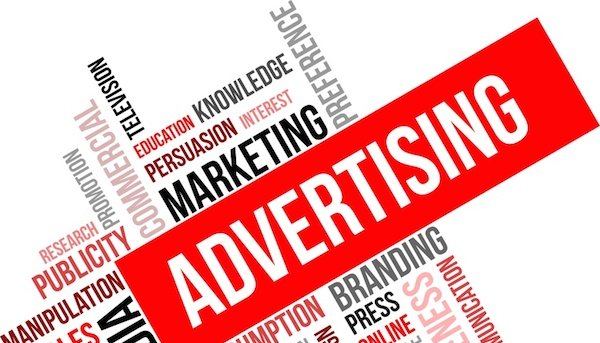The trend difference between marketing and advertising has been on for ages, especially in the business sphere. Most persons, have different views of both, while some mistake one for the other, thereby creating or causing more confusion.
Imagine walking down the road innocently and you are asked a deep and confusing question like, ‘hey, can you please differentiate between marketing and advertising for me?’ especially from a high school student, who seems to be in love with asking questions?
Although they are different, they are alike as well because, they achieve a particular aim; which is expansion of markets for a particular product and service. They both have their process, which makes them stand out from each other.

Understanding their uniqueness, will help any and every business, to know which one to apply, when to apply and how to apply, which at the end, will help with customer acquisition and product market expansion.
This blog post, seeks to address the differences between marketing and advertising. But first an explanation of the two terms are important.
WHAT IS MARKETING?
To get a clear idea of what marketing is, illustrations will be the key to perfecting the meaning and concept of marketing.
A mobile phone manufacturing company like Gionee™, looks at a PLACE like the African continent and sees a need it can capitalize on, power. The African continent, is tagged a dark continent for many reasons, but the utmost reason is the absence of power supply. Another selling feature of the African market is that, Africans love taking pictures at any given time, hence the need to produce not just a power efficient device, but a device that can take quality pictures. Therefore, something has to exist to satiate these needs.
To that note, a PRODUCT by the name Gionee M6 Plus is produced with these primary features plus, some auxiliary features are present when it hits the market.
A favourable PRICE is then considered for that device because, the majority of Africa’s population are middle income earners. On that note, they will need to make more sales or totally knock out and take over the markets of their competitors like Samsung, HTC, LG etc. because, price will surely determine the success of that company and its product.
The next thing the company does, is to provide information of that product for the public to understand its existence and why they need to buy it. By doing this, they are trying to PROMOTE that device, for them to make sales.
Did you notice the words in BLOCK LETTERS above? Those words are simply what marketing is all about; the 4P’s (Product, Place, Price and Promotion). Marketing revolves around these 4P’s, they form the concept, basis and actualisation of marketing.
PLACE: from the above explanation, it is clear that a particular location was studied, a product was manufactured to meet the needs of that market and that product can only be sold in that market.
An access to the goods and services via a selection of a distribution channel to reach the customers’ place has to be put in place. Understand the market inside out and you will discover the most effective placing and distribution channels that effectively speak with your market.
PRODUCT: a product that addresses a consumer demand or need be it tangible or intangible has to be identified, selected and developed. A product must meet the needs of a market, for instance you cannot sell a power bank (which is an auxiliary for charging a dead phone) in an industrialised area where there is power constantly. Before a product gets into the market, a market survey is conducted to ensure the lifespan and life cycle of that product which includes the growth stage, the maturity stage, and the sales drop stage. For any product to survive the sales drop or decline stage, it has to not just meet the needs or demands of the customers but, it has to constantly face innovation.
PRICE: the monetary value exchanged between the customer(s) and distributive channel in place of the goods. Price defines the company’s success profit and survival. Price fixing can affect the sales and demand of the product. If the price is shocking, you will be chasing away customers and your products will be acquiring dust on your shelf. On the other hand, if your price is favourable and competitive, you will attract more customers and make more sales.
But the price factor is a very tricky one, your price could be favourable and customers could undermine your product, you might witness a drop in profit and incur more cost. Another incident under the trick of price is this, a new company can come up and create a high ticket product, considering the fact that the company is yet to make a name, it is somewhat impossible for that company to succeed because of its fierce competitor.
PROMOTION: this is an arm of marketing, which boosts brand recognition of a product and possible sales. The important factor here is the type and extent of communication, a company employs to provide substantive information about its products and services. Elements of promotion are Sales Organization, Public Relations. Advertising and Sales Promotion. These four elements are the components of the wheel of promoting your products to the exact market and with the exact price. Advertising is a component of marketing which helps to attract the right clients to a product or service.
Having created an image and foundation of what marketing is, it is right and correct to define marketing as a management process, which involves the movement of goods and services, from concept phase to the customer awareness.
Marketing though different from selling, is simply based on thinking about customer needs and their satisfaction with its major goal being to create an awareness of the right product to the right market.
This brings us to what advertising is.
WHAT IS ADVERTISING?
Before going into what advertising is, it is best to create illustrations so as to have a clear understanding.
Still applying the use of Gionee M6 Plus as an instance, the producers of the device will make public, the basic information concerning the device, which will make people to be willing to part with their cash in exchange for that device. The producers will try to get into the psychology of their market (customers) and convince them beyond reasonable doubts, that the Gionee M6 Plus will serve their needs.
This is where the prospective customers might turn on their TVs, radios or flip through newspapers and see the wonders of the Gionee M6 Plus in form of adverts. Here the company focuses on the strengths of that device which are of course its massive 6020 mAH battery and its reverse charging feature to power other devices with lesser battery capacity and how the customers will benefit more if they purchase that device. This serves as its ‘Unique Selling Point (USP)’ and of course the prospective customers will get their satisfaction and will be willing to part with their money for that device.
Therefore we can define advertising as a branch of marketing communication by businesses to promote, persuade and sell their products and services. That is to say advertising is one of the components of marketing.
The major aim of advertising is to influence a buyer by promoting a product or service. To achieve this aim, advertising emphasizes on innovative placing and media. In doing so, advertising creates awareness about what that product or service has to offer.
According to the “Hierarchy of Effects” model by Robert J. Lavidge and Gary A. Steiner, a buyer moves through six stages when making a purchase. These stages are awareness, knowledge, liking, preference, conviction and possible purchase.
These six stages are further divided into three classifications:
Awareness and Knowledge (Cognitive): cognitive has to do with the subconscious mind or psychology of a human. The manufacturer(s) of a product at this stage, gets into the psychology of a target audience by providing the information of that product that tallies with their needs through the advertising platform.
Liking and Preference (Affective): at this stage, the success of the cognitive effect on the prospective customer determines the success of this stage. When a customer likes the idea of the product, they begin to reach out to the brand or any other means that has a link to that branch, in other to know more about the product.
Conviction and Purchase (Conative): at this stage, the customer(s) are convinced about the durability and features of that product mostly because it suites their needs. He is then moved to either make possible intentions to buy or has already purchased the product.
Now to the big question….
WHAT IS THE DIFFERENCE BETWEEN MARKETING AND ADVERTISING?
First, marketing is an all-encompassing strategy applied to move a product from its concept stage to the psychology or subconscious of a target audience, advertising on the other hand is a branch or sub set of marketing which summarises the full purpose of customer awareness of a product.
Secondly, the major goal of marketing is to create an awareness of the needed product to the right market bearing in mind the needs of the market, while advertising on the other hand seeks to compel and influence the buying behaviour of a customer.
Thirdly, marketing simply targets the lifespan of a product, whereas advertising targets not just ensuring a successful lifespan of a product but, market expansion as well.
Fourthly, marketing has to locate the right market or target audience, while advertising already has the target mind and simply needs to compel them to buy the product or services.
There, what are your inputs?
